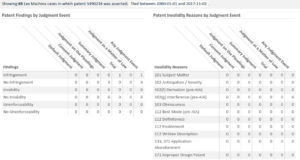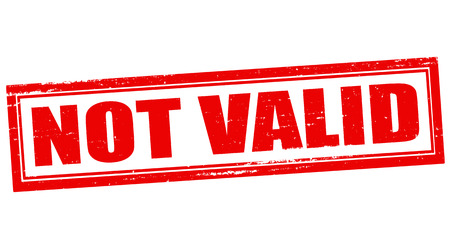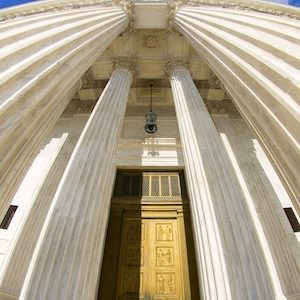On October 23rd, the U.S. Court of Appeals for the Federal Circuit issued a ruling in Uniloc USA, Inc. et. al. v. Sega of America, Inc., et. al. which affirmed a ruling by the Patent Trial and Appeal Board (PTAB) that all 20 claims of a Uniloc patent were invalid. In affirming the PTAB’s final written decision, the Federal Circuit panel of Chief Judge Sharon Prost and Circuit Judges Jimmie Reyna and Todd Hughes dismissed Uniloc’s allegations that the PTAB erred in its priority analysis and that the prior art reference submitted by the challenger to the PTAB did not disclose certain claim elements.
The Uniloc patent invalidated by the PTAB in this case is U.S. Patent No. 5490216, titled System for Software Registration and issued in February 1996. It claims a registration system for licensing execution of digital data in a use mode, the system including both local and remote licensee unique ID generating means, and a mode switching means operable on a platform which permits the use of digital data only if the locally-generated licensee unique ID matches the remotely-generated licensee unique ID. The innovation solved issues in prior art systems for software registration for software transferable by physical media which used shell programs or did not utilize information unique to the intended licensee which is distinguishable from the identification of the platform.
According to data collected from Lex Machina, Uniloc’s ‘216 patent has been asserted in 65 cases filed in U.S. district court going back to September 2003. At the PTAB, Uniloc has faced seven petitions for validity challenges on the ‘216 patent, including six petitions for inter partes review (IPR) and one for covered business method (CBM) review. The recent Federal Circuit decision is an appeal from a final written decision on one of the ‘216 IPRs issued by the PTAB in March of 2016. The panel of administrative patent judges (APJs) at the PTAB decided that Sega and the other petitioners were able to prove by a preponderance of evidence that the ‘216 patent was invalid under 35 U.S.C. § 102 for novelty and 35 U.S.C. § 103 for obviousness.
To support their argument of novelty and obviousness, petitioners submitted five U.S. patents as prior art dated between December 1991 and September 1999. The PTAB panel did not apply the broadest reasonable construction to the claims of the ‘216 patent because it expired in September 2013 and the claims were not subject to amendment. Instead, the PTAB panel adopted a claim construction stemming from a case in the District of Rhode Island filed by Uniloc against Microsoft in a 2006 claim construction decision. The PTAB panel also established that the earliest priority date for the ‘216 claims was in September of 1993.
The PTAB found that a patent application filed in December of 1992 was prior art which anticipated claims 1-11 and 17-20 of the ‘216 patent. That patent application culminated in the April 1996 granting of U.S. Patent No. 5509070, titled Method for Encouraging Purchase of Executable and Non-Executable Software. Uniloc had argued that this prior art reference failed to disclose a means for generating the licensee unique ID. The PTAB panel, however, was persuaded by the petitioners argument that the algorithm covered by the ‘070 patent combines three ID numbers to generate a passwordable ID, thus anticipating the challenged claims.
In its appeal to the Federal Circuit, Uniloc raised an argument similar to one presented in the PTAB trial that the ‘070 prior art reference, also known as “Schull,” wasn’t prior art. Uniloc alleged that the PTAB erred by applying an improper legal standard to its priority analysis; instead of satisfying the part (a) general provisions of 35 U.S.C. § 112 for specification, the Schull reference disclosure of “specific structure” only answered part (f) of Section 112 limited to an element in claim for a combination. Uniloc had argued to the PTAB and the Federal Circuit that Australian provisional patent applications related to the ‘216 U.S. patent disclosed a “summation algorithm” that combines unique user information with a serial number generated from information provided by the environment in which the software is protected to run. The Federal Circuit rejected this argument based on testimony from an expert witness called by the petitioner-appellants in the case that the combination of letters and numbers did not necessarily involve mathematical addition.
“Accordingly, the Board here proceeded through the proper analysis for determining priority by first construing the means-plus-functions claims under § 112, ¶ 6, and then determining if the original disclosure ‘describ[ed] the invention, with all its claimed limitations’… Because substantial evidence supports the Board’s finding that the provisionals do not disclose a summation algorithm, we agree with the Board that the ’216 patent may not claim priority to the Australian provisionals.”
On appeal, Uniloc also challenged the PTAB’s finding on the Schull prior art reference disclosure, arguing that even if the patent application does predate the Uniloc patent, it fails to disclose a “generating means.” “Schull discloses a system that allows a user to access advanced features of software only with a valid password,” the Federal Circuit’s opinion reads. This password is generated by an algorithm for the local generation of a passwordable ID which includes two digits that serve as a checksum for preceding digits. The Federal Circuit found that this, in concert with the performance of the same algorithm at a licensing processor and a password validation check at the user’s processor, discloses a summation algorithm. Uniloc argued that the disclosed checksum did not perform the function of generating local or remote licensee unique ID but the Federal Circuit found that the PTAB properly ignored this argument because Uniloc didn’t cite to any expert testimony as evidence.

The invalidation of Uniloc’s ‘216 patent only took a few serial petitions at PTAB, a far more successful strategy than apparently any defendant was able to achieve in court. According to Lex Machina, although there was only one finding of infringement in the 65 district court cases involving the ‘216 patent and three findings of no infringement, not a single finding of invalidity was ever issued by the district courts.











